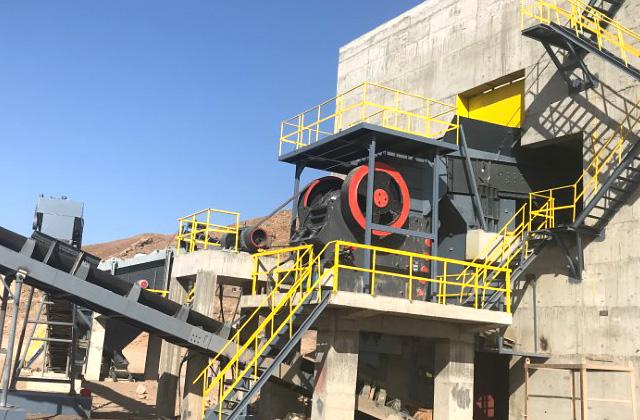A limestone crusher is a machine designed to reduce large rocks into smaller rocks, gravel, or rock dust. It plays a crucial role in many industrial and construction applications. Limestone, a sedimentary rock composed primarily of calcium carbonate, is a key ingredient in the production of cement, concrete, and various other construction materials. The process of crushing limestone involves breaking the rock into smaller pieces to facilitate its use in various applications.
Components and Working Principle:
A typical limestone crusher consists of several components, including a feed hopper, crushing chamber, an impeller, a rotor, and a discharge chute. The process begins with the delivery of raw limestone to the feed hopper. The material is then fed into the crushing chamber, where it is struck by the rapidly rotating impeller or rotor. The force of the impact breaks the limestone into smaller pieces, reducing its size to meet specific requirements.

The design and operation of limestone crushers may vary, but the fundamental principle remains similar across different types. Common types of limestone crushers include jaw crushers, impact crushers, cone crushers, and hammer crushers. Each type is suitable for different applications and produces varying sizes of crushed limestone.
Features of Limestone Crushers:
- Crushing Chamber: Limestone crushers typically have a large crushing chamber that allows the material to be easily processed. The chamber is usually designed to accommodate the size and shape of the limestone rocks.
- Rotor Design: The rotor is a critical component that impacts the efficiency of the crushing process. Different rotor designs may be used based on the specific application and desired outcome.
- Hammers or Blow Bars: These are the components that impact the limestone and break it into smaller pieces. The type and arrangement of hammers or blow bars can vary, affecting the final product size and shape.
- Adjustable Settings: Many limestone crushers come with adjustable settings to control the output size of the crushed material. This allows for flexibility in meeting different project specifications.
- Power Source: Limestone crushers can be powered by electricity or diesel engines, depending on the location and accessibility of power sources.
Applications of Limestone Crushers:
- Construction Aggregates: Limestone crushers are widely used in the production of construction aggregates, such as crushed stone, sand, and gravel, which are essential components in concrete and asphalt.
- Mining Operations: Limestone is often extracted from quarries, and crushers are used to process the mined material for various industrial applications.
- Cement Production: Limestone is a key ingredient in cement manufacturing. Crushers play a crucial role in reducing the size of limestone rocks before they are used in the cement kiln.
- Road Construction: Limestone crushers are utilized in road construction projects to create a solid foundation for roads and highways.
Maintenance and Safety:
Proper maintenance of limestone crushers is essential to ensure optimal performance and longevity. Regular inspection of wear parts, lubrication, and addressing any issues promptly can prevent downtime and extend the lifespan of the equipment. Additionally, adherence to safety protocols is crucial to protect operators and ensure a safe working environment.
Limestone crushers are essential machines in various industries, contributing to the production of construction materials, cement, and other critical products. The choice of the type of crusher depends on factors such as the size of the raw material, desired output size, and specific application requirements.
